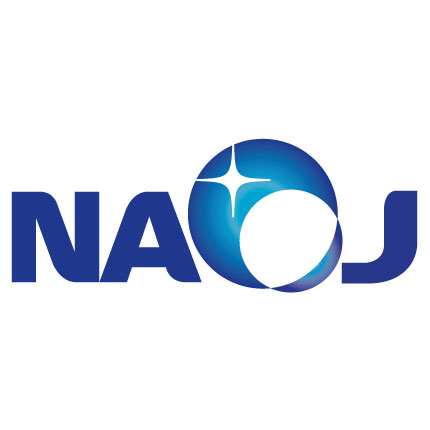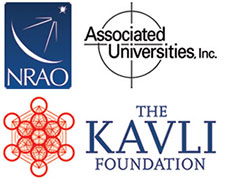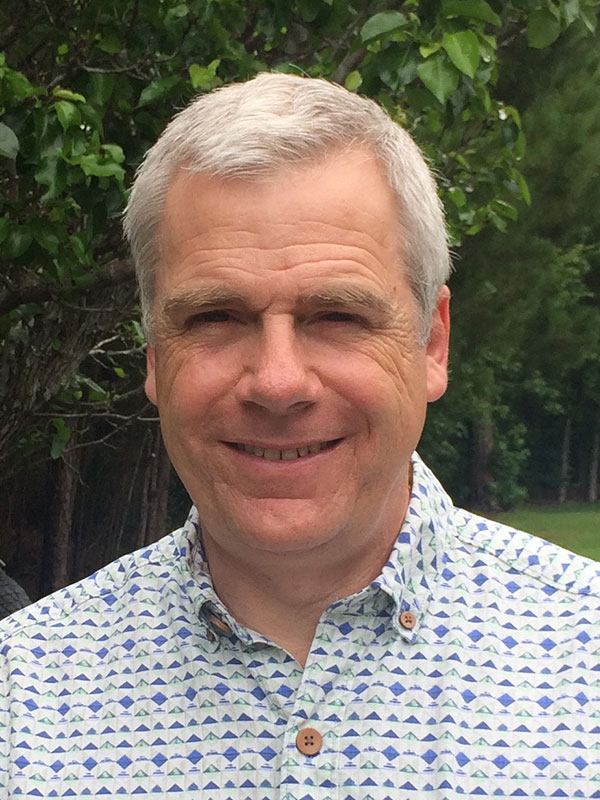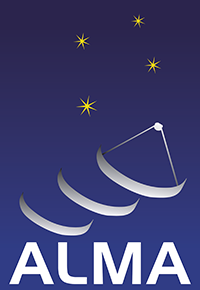NRAO eNews
Volume 10, Issue 5
1 June 2017
Upcoming Events

American Astronomical Society Meeting
Jun 4 - 8, 2017 | Austin, Texas

2017 Astrobiology Graduate Conference
Jun 5 - 9, 2017 | Charlottesville, VA

Women in Astronomy IV: The Many Faces of Women Astronomers
Jun 9 - 11, 2017 | Austin, TX

Developing the ngVLA Science Program Workshop
Jun 26 - 29, 2017 | Socorro, NM

Measuring Star Formation in the Radio, Millimetre, and Submillimetre
Jul 24 - 26, 2017 | Manchester, United Kingdom

Fred Lo Science Symposium
July 24 - 26, 2017 | Charlottesville, VA

5th U.S. – China Workshop on Radio Astronomy Science & Technology
July 27 - 29, 2017 | Charlottesville, VA

Futures III
Aug 2 - 4, 2017 | Berkeley, CA

ALMA Long Baseline Workshop
Oct 3 - 5, 2017 | Mielparque Kyoto, Japan

6th VLA Data Reduction Workshop
Oct 23 - 27, 2017 | Socorro, NM
Futures III Registration Open

The NRAO has organized a series of three conferences for the community to broadly discuss and seek consensus regarding potential U.S. futures for radio-millimeter-submillimeter (RMS) science in the 2020s and beyond. Funded by the Kavli Foundation and Associated Universities, Inc., the third and final conference in this series – Futures III – will be 2-4 August 2017 in Berkeley, California and will be attended by scientists from U.S. and international universities, observatories, and laboratories in virtually every field of astrophysics.
Registration for Futures III is now open; the scientific program and travel information are now available at the conference website.
Futures III will continue discussions and analysis of two key opportunities emerging from the Futures I and Futures II conferences – a next generation Very Large Array (ngVLA) and Spectral-Line Cosmology & Low Frequency Instruments, including the Hydrogen Epoch of Reionization Array (HERA) and related intensity mapping opportunities. An update on other key areas – Cosmic Microwave Background, Pulsars, and Midscale developments – is also planned. Over the past two years, the Kavli meeting series has been a community-wide effort to explore our scientific visions for the next decade, and seeking to develop consensus and support for RMS initiatives on all resource scales in the upcoming decadal survey.
Futures I was held 15-17 December 2015 in Chicago and was structured around the key RMS science themes and community priorities identified in the Astro2010 Decadal Survey. This included fields where radio data was supporting other instruments, and those focused on possible standalone radio astronomy outcomes. Futures I yielded a compelling definition of the transformational science that interests the community and motivates the exploration of the scope and feasibility of the future RMS instrument and technique options.
The community and NRAO selected four areas for deeper discussion at the Futures II Conference, held 3-5 August 2016 in Baltimore: (1) a next generation Very Large Array; (2) a Hydrogen Epoch of Reionization Array; (3) pulsar instrumental and scientific opportunities; and (4) the Cosmic Microwave Background. Parallel sessions broadly discussed potential RMS Flagship and small/midscale initiatives associated with these. Flagship options are major investments with widespread community benefit and support that would require funding by or on a scale comparable to the NSF Major Research Equipment and Facility Construction program. small/midscale initiatives are investments that might be funded via the NSF Mid-Scale Initiative Program.
We look forward to seeing you in Berkeley in August!
Semester 2017B Proposal Outcomes

The NRAO has completed the Semester 2017B proposal review and time allocation process for the Very Large Array (VLA). A total of 187 new proposals were received for the 1 February 2017 submission deadline. The oversubscription rate (by proposal number) was 2.9 and the proposal pressure (hours requested over hours available) was 1.7. A number of large, time-critical (triggered) and multi-observatory proposals were received.
The Semester 2017B proposals were reviewed for scientific merit by eight Science Review Panels (SRPs) and for technical feasibility by NRAO staff. These reviews were completed in March 2017 and then considered by the Time Allocation Committee (TAC) at a face-to-face meeting on 18-19 April 2017 at NRAO in Socorro, New Mexico. The TAC – comprising the eight SRP chairs – was charged with recommending a science program for Semester 2017B to the observatory director. The recommended program was reviewed and approved on 3 May 2017.
A disposition letter was sent to the principal investigator and co-investigators of each proposal on 12 May 2017 and a TAC report containing information for proposers and observers, including statistics and telescope pressure plots, was released the same day. The approved science program for the VLA has been posted to the NRAO science website. The authors, title, abstract, and scheduled hours for each approved proposal can be accessed from the Proposal Finder Tool.
The Student Observing Support program continues to be available for NRAO observing programs and we encourage Principal Investigators of highly ranked VLA proposals to consider applying for support.
The NRAO welcomes community feedback on the proposal review and time allocation process. Please provide such feedback via the Proposal Review department of the NRAO Helpdesk.
New NRAO Central Development Lab Director

Bert Hawkins
[click to enlarge]
I am pleased to announce that Dr. Bert Hawkins will be the next director of the NRAO Central Development Laboratory (CDL), effective 10 July 2017.
Bert arrives at NRAO after spending five years as the director of the Science and Technology Directorate at the U.S. Army National Ground Intelligence Center (NGIC), just north of Charlottesville. At NGIC, he led a team of over 300 scientists, engineers, analysts, and support personnel located in Virginia, Maryland, and various centers around the world. He is experienced across several disciplines, including millimeter/submm/infrared/acoustic technology development and analysis, foreign R&D and weapons/systems performance, and radar characterization of physical objects. Bert’s Ph.D. thesis in electrical engineering from the University of Virginia studied the modeling of moving targets in compact cm/mm-wavelength radar ranges. He brings highly relevant experience to the CDL in microwave, radar, and related technologies, combined with significant leadership and lab management experience.
As NRAO continues to develop innovative instrumental options for projects like the next-generation Very Large Array, an upgraded Atacama Large Millimeter/submillimeter Array, and other domestic/international instruments and opportunities, Bert’s experience, creativity, contacts, and organizational skills will position CDL and NRAO to take a major role in the future of our field and find opportunities in adjacent markets of interest.
I would like to thank Bill Randolph and Kamaljeet Saini for their great efforts in leading the CDL over the past few months. Both will be continuing in management roles at CDL over the next few months to assist Bert with his transition to NRAO.
Please join me in welcoming Bert Hawkins to the Observatory.
ALMA Program News

Science Operations
ALMA science observations for Cycle 4 continued, with the array expanding from C40-3 (1.5 arcsec beam at 100GHz; 15-460m baselines) in early April to configuration C40-5 (0.54 arcsec beam at 100 GHz, 17-1100m baselines) through May before moving to the longest baselines (C40-9, 0.066 arcsec beam at 100 GHz, 0.27-12.6 km baselines) for June observations. Configuration files are
included in the recent CASA 4.7.2 release.
Supplemental Call for Proposals
A Supplemental Call for Proposals to use the 7-m Array in Cycle 4 was announced, enabling the community to propose projects to fill in undersubscribed portions of the 7-m observing queue. The Supplemental Call closed on 15 May 2017. A total of 198 valid proposals were received requesting a total of 4815 hours on the 7-m Array, for an over-subscription rate of ~ 6. PIs should receive notification of the results of the proposal review the week of June 12. The first projects are now scheduled on the array.
Cycle 5 Call for Proposals
The Cycle 5 Call for ALMA Proposals closed 20 April 2017. The Joint ALMA Observatory received 1665 proposals, and a summary is available on the ALMA Science Portal. Members of the ALMA Science Review Panels will meet in Antwerp, Belgium, 19-23 June. Review results are expected in late July 2017.
NRAO conducted several Community Days and proposal planning events in April. These events are one to two day workshops organized and led by experienced local postdocs from the ALMA Ambassadors program and/or North American ALMA Science Center staff with a focus on the capabilities of ALMA, mm/submm interferometry observing techniques, and the tools required to design ALMA observing programs and to submit proposals. An event was held at UNAM in Morelia, Mexico 25-26 April; another is scheduled for Cornell University in Ithaca, New York 10-11 July.
ALMA Development: A Science Sustainability Program
A Call for Proposals for ALMA Development Studies closed 1 May 2017. Twenty-six proposals were submitted. Eleven proposals were submitted in the Strategic category; fifteen proposals were submitted in the General category. Four proposals were submitted in the Advanced Software category (one Strategic), ten were submitted in the Advanced Techniques category (three Strategic), and twelve were submitted in the Advanced Hardware category (seven Strategic). These proposals were submitted by 24 Principal Investigators from ten institutions. There were 52 co-investigators (including four who were also PIs on other proposals) from 25 institutions on five continents, including all ALMA partners.
ALMA Development Project
The ALMA Project to build a Band 2+ receiver, covering 67-95GHz, passed its Preliminary Design Review held in Charlottesville, Virginia, USA 30-31 May 2017. This receiver offers extended coverage over the original ALMA Band 2 specifications, covering a wider frequency range and providing twice the bandwidth of other ALMA receivers (two sidebands of 8 GHz bandwidth in two polarizations). The entire passband may be covered in two frequency settings when deployed with an upgraded correlator and digitization system. A correlator – see NAASC Memos 114 and 115 – and a digitizer upgrade to accommodate this increased functionality are in the late planning stages. A new digitization system is also in the advanced planning stages.
ngVLA Workshop Science Program

The Developing the Next Generation Very Large Array Science Program Workshop will focus on the science program that will inform the design concept for the Next Generation Very Large Array (ngVLA) and will be held 26-29 June 2017 in Socorro, New Mexico, USA.
The Scientific Organizing Committee has arranged an exciting science program, posted on-line at the workshop website, that will highlight recent results from the Jansky VLA and ALMA and discuss how these results inspire the planning for the ngVLA. Invited talks will highlight synergies between the ngVLA and future major astronomical facilities, ground- and space-based, spanning the entire electromagnetic spectrum. Four space artists will be included in the meeting and will be charged with creating art informed by the science being discussed, a unique set of visuals to illustrate what ngVLA could make possible. The final day of the workshop will include community working group sessions to focus the design parameters on the most exciting science while critically assessing potential design trade-offs.
The general ngVLA design concept envisions an interferometric array with 10X larger effective collecting area and 10X higher spatial resolution than the current Jansky VLA and ALMA, optimized for operation in the frequency range 10 – 50 GHz, with reasonable performance over 1.2 – 116 GHz. The ngVLA opens a new window on the Universe through ultra-sensitive imaging of thermal line and continuum emission down to milli-arcsecond resolution, as well as unprecedented broad band continuum polarimetric imaging of non-thermal processes.
We look forward to seeing you in Socorro in June!
Refereed Papers Accrue One-Half Million Citations

On 15 May 2017 at 6:05 a.m. EDT, the number of citations for NRAO telescope papers broke the ½ million mark! Currently, the NRAO publications bibliography contains 16,257 refereed papers. The NRAO Library has tracked papers since the first written by David Heeschen in 1957 (ApJ 126: 471-479); however, prior to 1975, papers were not coded to telescopes or authors. So, the ½ million citation mark is very impressive in just over 41 years.
When a paper uses significant Survey data it is included in the NRAO publications bibliography and the citation count, while new surveys are added to the bibliography as they are identified. Please note that the citation count does not include any papers using Green Bank Telescope data or Very Long Baseline Array data done since the creation of the Green Bank Observatory and Long Baseline Observatory in Fiscal Year 2017.
Requirements for paper inclusion in the NRAO bibliography and a list of included telescopes and surveys is available at:
http://library.nrao.edu/papersmethod.shtml and http://library.nrao.edu/pubdetails.shtml.
The NRAO Library looks forward to the one-millionth citation for refereed papers that use NRAO telescope data. Congratulations to the authors that have used and published NRAO telescope data leading to the milestone ½ millionth citation!
Recent Media Releases
|
VLA Reveals New Object Near Supermassive Black Hole in Famous Galaxy |
|
|
ALMA Eyes Icy Ring around Young Planetary System |
|
|
Image Release: A New Look at the Crab Nebula |
Career Opportunities
CASA Lead: The NRAO is actively seeking a candidate with a combination of software, management, and ideally, astronomy experience to join the Data Management and Software Department as the CASA Group Lead. The CASA Group is responsible for the Common Astronomy Software Applications (CASA) package, and the CASA pipelines, which provide heuristic-based automated processing for calibration and imaging. The position will be located either in Charlottesville, Virginia or in Socorro, New Mexico.
From the Archives
Ellen Bouton

[click to enlarge]
About this month's photo: Students participating in NRAO summer student programs arrive at their respective NRAO sites in late May and early June. Since its inception in 1959, the summer student program has engaged well over 1,000 young people in scientific research, and many NRAO summer students have gone on to distinguished careers in astronomy and other physical sciences. The list of former NRAO summer students now includes women and men who represent a wide range of career stages, research interests, geographic locations, and ethnic backgrounds.
This photo is of the 1970 summer students in Green Bank. [Front row, left to right] Shawn Donley, Dale Deniston, Bengt Pettersson, Diane Williams, Alan Levine. [Back row, left to right] Arnold Rots, Kevin Bromberg, Uday Sengupta, Charles Cox, Michael Allen, Steven Chu, Fred Cooper.
From the Archives is an ongoing series illustrating NRAO and U.S. radio astronomy history via images selected from our collections of individuals' and institutional papers. If readers have images they believe would be of interest to the Archives, please contact Ellen Bouton.


